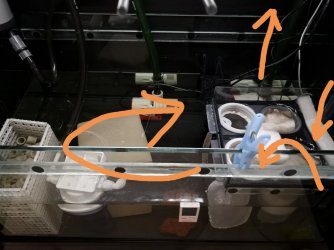Anyone running a sump for their freshwater planted tanks?
Would canister filters be more effective at removing debris/waste etc than a sump?
My tank is a Reefer tank with sump so I'm still on the fence about it.
I'm slowly buying all the aquascape stuff and this question has been on my mine since I took down my Reef tank.
I've asked a related question before, and consensus is 2 canisters left and right side IF I go the non-sump method, something like Oase Biomaster or Eheim 2217
Would canister filters be more effective at removing debris/waste etc than a sump?
My tank is a Reefer tank with sump so I'm still on the fence about it.
I'm slowly buying all the aquascape stuff and this question has been on my mine since I took down my Reef tank.
I've asked a related question before, and consensus is 2 canisters left and right side IF I go the non-sump method, something like Oase Biomaster or Eheim 2217




